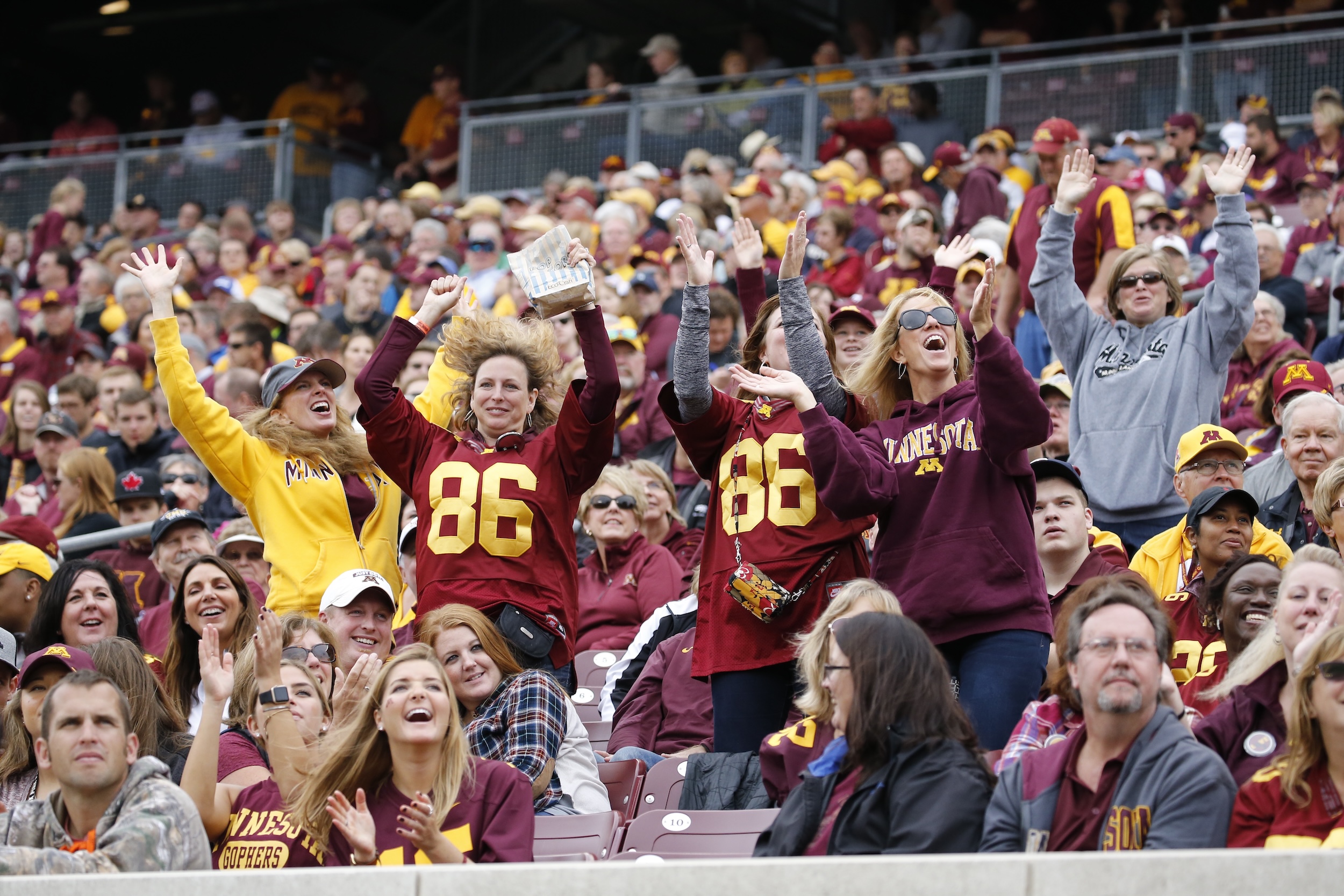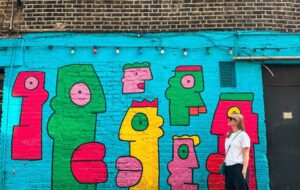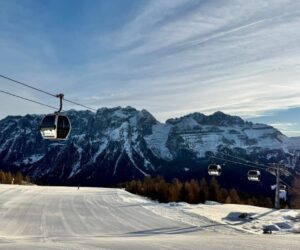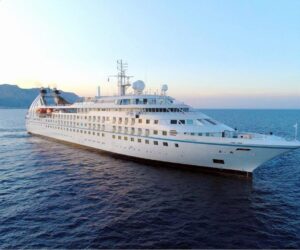Minnesota’s Top College Sports Teams
Andrew.Parks
Tue, 09/17/2024 – 14:05
Minnesota is home to college and universities of all sizes, many of which have student athletes competing in everything from hockey, basketball, volleyball, dance, and more. Learn more about the top college sports teams in Minnesota and where to cheer them on.
What To Read Next
Essential Beer Festivals
Read More
5 Things to Do in Minneapolis and St. Paul
Read More
Snowmobiling and Ice Fishing in Northeast Minnesota
Read More
Get help from the experts to plan your trip
Want to know the best spots in Minnesota? How about tips on how to make the most of your time in a specific city? Our Minnesota experts can answer your questions, offer advice, or plan the perfect Minnesota trip for you. For free.
Things to Do
Professional Sports
Caitlin Hannah

A stadium full of Gopher fans
/ Credit: Gopher Sports
UNIVERSITY OF MINNESOTA
Located in Minneapolis, the University of Minnesota’s Twin Cities campus is the largest college with more than 54,000 students. Say “Ski-U-Mah!” and support their popular Division I athletic teams. In the fall, the excitement of college football is palpable on the Minneapolis campus of the University of Minnesota at Huntington Bank Stadium.
As the “State of Hockey”, catching a Division I college hockey game is a must for any sports fan. Playing at Ridder Arena, the University of Minnesota women’s hockey team (Western Collegiate Hockey Association) has won the NCAA National Championship eight times in the past 16 years. The University of Minnesota men’s hockey team (Big 10) has won the NCAA National Championship five times and plays at 3M Arena at Mariucci.

U of M’s women’s hockey team
/ Brad Rempel
The men’s and women’s basketball teams (Big 10) play at Williams Arena, known to fans as “The Barn.” Women’s volleyball (Big 10) plays at the Maturi Pavilion. Other popular sports include the champion dance team (stars of the viral ‘Dream On’ dance), soccer, swimming, baseball, track and field, and more.
Other campuses in the U of M system that have intercollegiate teams include Moorhead (Dragons), Crookston (Golden Eagles) and Morris (Cougars).

Credit: Brett Groehler / University of Minnesota Duluth
UNIVERSITY OF MINNESOTA DULUTH
Located in Duluth with campus views of Lake Superior, the Bulldogs have won 19 NCAA National Championships and offer 16 intercollegiate athletic programs. The Bulldogs dominate in hockey for both men’s (National Collegiate Hockey Conference) and women’s (Western Collegiate Hockey Association) teams taking to the ice at AMSOIL Arena.
Other popular sports include football, basketball, soccer, track and field, and more. (Northern Sun Intercollegiate Conference) all competing at Griggs Field at James S. Malosky Stadium.

The Minnesota State Mavericks celebrate making the Frozen Four
MINNESOTA STATE UNIVERSITY MANKATO
Located in southern Minnesota about an hour and half from Minneapolis, the Minnesota State University Mankato Mavericks have popular NCAA Division I men’s (Central Collegiate Hockey Association) and women’s (Western Collegiate Hockey Association) hockey teams who compete at the Mayo Clinic Event Center.
Other popular NCAA Division II sports include football, basketball, track and field, and more (Northern Sun Intercollegiate Conference).

Credit: Luke Schmidt / St. Cloud State
ST. CLOUD STATE UNIVERSITY
Located a little over an hour away from Minneapolis, St. Cloud State University is home to the Huskies. Their most popular teams, the Division I men’s ((National Collegiate Hockey Conference) and women’s hockey teams (Western Collegiate Hockey Association) play at the Herb Brooks National Hockey Center, named after the iconic ‘Miracle on Ice’ coach and Minnesota native, Herb Brooks. Other top sports include soccer, basketball, volleyball, baseball, softball, and more.

Credit: University of St. Thomas
UNIVERSITY OF ST. THOMAS ST. PAUL
Located in St. Paul, just off historic Summit Ave, the ‘Tommies’ include 21 varsity sports teams. The university participates in the NCAA Division. Some top spots include men’s (Central Collegiate Hockey Association) and women’s (Western Collegiate Hockey Association) hockey, football (Pioneer Football League) and basketball. Other popular sports include baseball, softball, soccer, volleyball, dance, and more.

Credit: Winona State Gymnastics
WINONA STATE UNIVERSITY
Just over two hours away, in southern Minnesota’s bluff country is Winona State University. The Warriors compete in 14 Division II and 1 Division III varsity sports. The Altra Federal Credit Union Stadium (also known as Maxwell Field) is home to the football team and women’s soccer team. Other popular sports include basketball, baseball, softball, volleyball, gymnastics, and more.

Katrina Barthelt leads the Bemidji State Beavers down the field
/ Credit: Brent Cizek
BEMIDJI STATE UNIVERSITY
The Bemidji State Beavers men’s and women’s hockey teams compete at the NCAA Division I level and are members of the Western Collegiate Hockey Association. They both hit the ice at the Sanford Center near the shores of Lake Bemidji. Its others teams — including football, basketball, soccer and softball — compete at the Division II level.

Credit: Concordia St. Paul Athletics
CONCORDIA UNIVERSITY ST. PAUL
Concordia University is a private university located in the Lexington-Hamline North neighborhood of St. Paul, near Interstate 94. Their athletics program competes at the NCAA Division II level and are members of the Northern Sun Intercollegiate Conference. Its most popular sports are football, basketball, baseball, volleyball, and more.

Credit: SMSU Athletics
SOUTHWEST MINNESOTA STATE UNIVERSITY
Located in Marshall and part of the Minnesota State Colleges and Universities system, the Mustangs compete at the NCAA Division II level and are members of the Northern Sun Intercollegiate Conference. Its most popular sports are basketball, football, baseball, and more.
Find out more about Minnesota’s professional and semi-pro sports teams.

Huntington Bank Stadium
/ University of Minnesota








